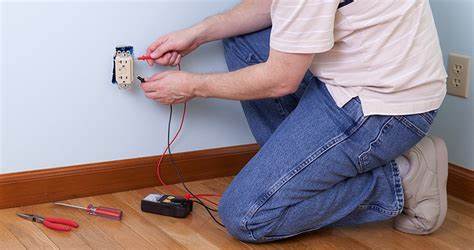
Why Having GFCI Protection Inside Your Home Is Essential
If you live in an older home or are considering buying one, you need to pay close attention to the electrical installation. If the property has not been renovated, you may find the original wiring in place and need to take steps as soon as possible to replace it. After all, this kind of installation is unlikely to have any GFCI protection, and this could pose an increased risk of electrocution or fire. You may have heard of GFCI but are unfamiliar with how it works or why it’s such a good idea, so you should certainly learn more about the system. So, read on for a simple explanation of how GFCI works and, crucially, discover if you are obligated to have these outlets in place.
What Is GFCI Protection?
GFCI is an acronym for “ground fault circuit interrupters.” It’s a special device that can instantly cut off the supply of power, reducing the risk of a short circuit and electrocution for anyone in the vicinity. The National Electrical Code in the US mandates that these devices be fitted at any location close to a water source. The body responsible for maintaining the NEC has introduced several changes to these regulations over the years to safeguard more electrical installations. However, remember that some of these rules may also be modified by state regulators.
How Have the Rules Changed Over Time?
More than 50 years ago, you would only need GFCI protection for outdoor outlets (near a swimming pool, for example). However, regulators added various other risks as the years rolled by, including bathrooms, garages, hot tubs, kitchens, and other facilities. Initially, you only needed to have a GFCI device if the outlet was within 6 feet of a kitchen sink, but that rule was subsequently modified to include all countertop outlets.
The regulators went on to add crawl spaces, wet bars, laundry rooms, and other facilities so that today, almost every outlet near a potential water source must be equipped with this form of protection. Essentially, any receptacle that is easy to reach within such an environment should have GFCI protection. Yet as jurisdictions can modify the rules, it is essential to refer to your local building department to understand the laws where you live.
What Is a Simple Explanation of How GFCI Works?
This device detects the presence of a ground fault due to an interruption in the low-resistance grounding path for any electrical system or tool. When such a fault occurs, an electrical current may short-circuit and take an alternative path to the ground, possibly through the person touching the outlet or operating the tool. Needless to say, this could result in serious injury or death.
The ground fault circuit interrupter is essentially a circuit breaker that will immediately cut off electrical power should it detect the ground fault. It will act in a fraction of a second to interrupt the current if it senses that the amount of current moving out and back from the equipment (through conductors) does not match. When you plug a faulty tool into an outlet, the device will immediately cut off the power.
There are several different types of GFCI. The most common is the receptacle type which is built into an outlet and is relatively easy to install. Some are built into the cord of a tool to protect both the cord and any equipment attached to it. The portable GFCI device can be used whenever you have an appliance or tool but do not have access to a wall-mounted, GFCI-protected outlet. If you have any of these devices for outdoor use, they should be listed as waterproof.
Is There a Difference Between GFCI, GFI, and AFCI?
While there is no difference between GFCI and GFI, the AFCI (at-fault circuit interrupters) is a modern-day update of the original GFCI. They have a similar appearance to GFCI devices but can also protect the installation and your home from the risk of fire caused by sparking or arcing. So, if the wiring in your property is old and in bad condition, these interrupters could be even more important. After all, a large number of property fires are caused by arcing linked to inefficient wiring.
How Do You Test a GFCI Outlet?
GFCI devices are easy to identify as they have “test” and “reset” buttons. To test if that device is working, plug a lamp into the outlet and depress the test button. You should hear a clicking noise, and the reset button will pop out. This indicates that the circuit has tripped, and the lamp will not illuminate as no power is being supplied. However, when you press the reset button back in, the lamp will illuminate, and you can be sure that the GFCI device is working correctly.
Bear in mind that there may be more than one GFCI device on a single circuit. Consequently, you may need to check other devices if you are unable to reset one in particular. You may also need to look at the circuit breaker in your service panel and see whether that needs to be reset. If you’re still having a problem, it is time to call a qualified electrician for their help.
Are GFCI Outlets Required?
All new homes are required to have GFCI outlets before they can pass an inspection. However, while older homes are not required to be retrofit, it is certainly a good idea. After all, the cost of these devices could pale into insignificance should a fault cause an injury or a fire. If you decide to retrofit, you should bring in a qualified electrician to do this work for you from a safety and permitting point of view.
Inspecting Your Home
If you’re unsure about the condition of your home’s electrical system, it’s time to schedule an inspection. Bring in the experts from Pro Inspect Solutions, and they will help you with any property situated in Osceola, Orange, Seminole, and Volusia Counties.



